| 20: Picking Up
Stitches for Sleeves Sometimes you
will need to pick up stitches along the edge of rows. You may be
adding sleeves or bands, or it may be part of a shaping area on a
garment. If you are working in stocking stitch and the needles used
for the added section are the same size as you have been using for
the garment so far, then you will be dealing with placing stitches
into a number of rows. The rows are shorter than the stitches, so
you will need to evenly reduce the number of stitches you fit onto
the rows. Any added fabric will not sit flat if there is too much
width. If you are trying to make an increased or ruffled effect more
width is essential, but won’t be suitable if you are adding a
sleeve.
To prevent puckering or stretching, use the rule that three stitches
are equal in width to four rows in height. It is not always exactly
the correct ratio, but in all the hundreds, or maybe thousands of
garments I have been responsible for, I have never found that I
needed to change the ratio when knitting in stocking stitch with one
needle size.
With right side facing, pick up stitches between the first and
second stitches from the edge. Miss every fourth row to diminish the
number of stitches evenly and then any added knitting will sit and
fit perfectly in place [pic 1,2,3].
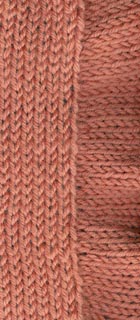
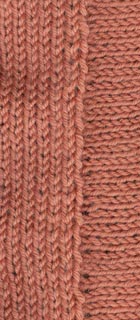
1: (left) One stitch to every
row. Bunchy result.
2: (right) Three stitches to every four rows. Sits
perfectly.
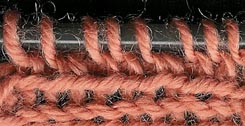
3: Pick up missing every
fourth row.
If you are working a sleeve with a finer
yarn and thinner needles than the rest of the garment, pick up one
stitch to every row [pic 4].
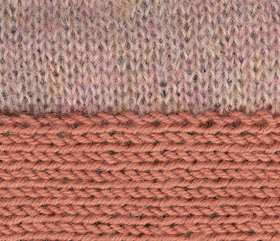
4: Using a finer yarn and finer needle, pick up one stitch
to every row on an edge.
You may want add a sleeve using a thicker
yarn on larger needles. This will be trial and error, but will
usually sit flat if you pick up one stitch to every two rows [pic
5].
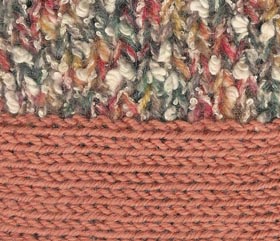
5: With larger needles and a thicker yarn, pick up one
stitch to every second row.
NEXT PAGE >>
chapter page: 1 | 2
|